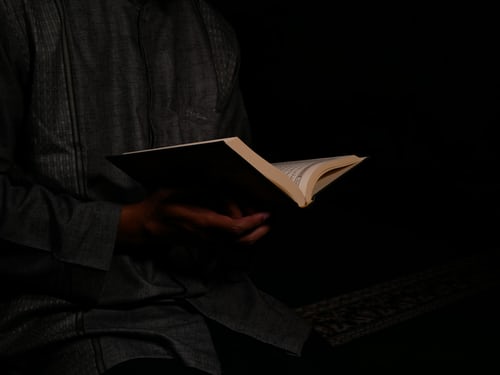Inspiring Older Readers
 posted on 23 Dec 2018
posted on 23 Dec 2018
In Praise of Shadows by Junichirō Tanizaki
Junichirō Tanizaki, who was born in 1886, was one of Japan’s most popular and acclaimed novelists. He died in 1965. His slender essay, In Praise of Shadows, written in 1933, is a plea for the preservation of traditional Japanese culture and aesthetics. In some respects it can be seen as a companion to Okakura Kakuzo’s 1906 essay The Book of Tea (reviewed on Letterpress HERE).
What makes Tanizaki’s little book especially poignant, however, is to bear in mind that it predates the Second World War and the indelible horrors of Hiroshima and Nagasaki. The trends in Japanese society that Tanizaki elegantly rails against – an increasingly vulgar modernisation that is destroying the meditative silence and reticences of traditional Japanese culture; the invasion of over-lit streets and homes and commercial buildings; piped music; the loss of numinous shadow and of the pools of tender darkness in which austere ceramics faintly glimmer and lacquerware glows – were really only in their infancy. One can only imagine how appalled he must have been by the time he died in his late-70s.
In Praise of Shadows is quite literally an essay in praise of shadows – and in praise of gentle, flawed crepuscular beauty, of ageing and patina, of the elegance of simple well-used things – tarnished silver, aged tin utensils, the softness of light barely shining through the traditional paper walls of the Japanese house, the dense shadow pooling beneath the deep eaves.
For such a short essay it meanders rather, but this is part of its charm. How else would you find out that the smokily pale complexion favoured in Japanese culture was, in earlier times, heightened by blackening the teeth and shaving off the eyebrows, and amongst women by wearing an iridescent green lipstick.
He talks not just of darkness but of ‘the colour of darkness’, its palpable texture. In an old teahouse he notes how darkness seems to pour down from the lofty ceilings. I wonder if my readers know the colour of that ‘darkness seen by candlelight’, he asks. ‘It was different in quality from darkness on the road at night. It was a repletion, a pregnancy of tiny particles like fine ashes, each particle luminous as a rainbow.’ He continues: ‘The elegant aristocrat of old was immersed in this suspension of ashen particles, soaked in it, but the man of today, long used to electric light, has forgotten that such a darkness existed.’ Ashes and ashen – as texture, as colour – are terms of high approbation in Tanizaki’s austere aesthetic world.
Tanizaki makes some slightly dubious claims, but even at their most dubious they remain interesting. He claims, for example, that the history of the development of recorded sound would have taken a different direction had it been pioneered specifically to capture the silences and reticence of traditional Japanese music; similarly that the technology of photography too would have developed differently had its primary aim been that of best rendering Japanese skin colour. These technologies, he says, are Western ones and have been developed to show Western arts to their best advantage. ‘But precisely on this account,’ he says, ‘they put our own arts at a great disadvantage.’
Brief and charming as it is, it is evident that this little essay is also much more complex than may at first appear. For one thing, there is an almost hidden note of mischief which I’m not sure the translation fully catches. This can be more clearly seen in a remark in the afterword. One of the translator’s explains that Tanizaki once commissioned an architect to build him a house. The architect arrived and said with pride, ‘I’ve read your In Praise of Shadows, Mr Tanizaki, and know exactly what you want.’ Tanizaki it is claimed said: ‘But no, I could never live in a house like that.’ This suggests that he was also something of a contrarian, a joker.
But a fascinating piece in the Japan Times paints an even more complex picture. It claims that in part Tanizaki was continuing a fierce but forgotten cultural debate from the early 1900s when he was a young man, the so-called ‘aesthetic life’ debate, in which Japanese intellectuals and writers were struggling to formulate a specifically Japanese response to the avant-garde ideas of art nouveau, symbolism and cubism, then just entering Japan. But in addition to this, the piece also points out that Tanizaki’s essay was a response to more troubling trends in Japanese modernity. ‘In the exterior world of 1930s and 1940s Japan, the “logic” of masculine modernity – all bright lights, throbbing engines and sparkling uniforms – had set Japan on a course of disastrous militarism and imperial expansion. Tanizaki was beckoning the reader back into the sensuous allure of the feminine shadows, showing how much of civilization was to be found there.’ Much food for thought, whatever view you might take.
I’ll finish, for no good reason other than its delicate beauty, with another image from Tanizaki’s essay. He is writing in praise of the soft light of candles and oil lamps, but even here is pragmatic, acknowledging that electric light too can have its charms: ‘Seen at dusk as one gazes out upon the countryside from the window of a train, the lonely light of a bulb under an old-fashioned shade, shining dimly from behind the white paper shoji of a thatch-roofed farmhouse, can seem positively elegant.’
If you need something short, gentle, meditative and restorative as an antidote to the rigours of Christmas, In Praise of Shadows (published by Vintage Classics in paperback) might be just what you are looking for.
Alun Severn
December 2018